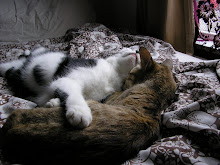This beautiful cold, clear winter weather may be lovely but it's getting a bit nippy, and my thoughts are turning to contemplating our honeymoon as a means of escaping whatever weather next autumn chooses to throw at Manchester.
This being an eco-wedding, flying will not be an option. Although some environmental writers – like my friend and colleague Simon Birch - argue that the benefits of eco-tourism to some countries makes flying there justifiable, the threat of climate change is just too big a shadow for OA and I to be comfortable with hopping on a plane for pleasure.
If we were being really good, of course, we'd be staying in the UK. I've visited some wonderful parts of Britain, with the beautiful southern coast of Dumfries and Galloway really standing out as somewhere with spectacular scenery, lovely picturesque towns like Kirkcudbright and Wigtown, affordable accommodation and (vitally important if you're me) great food like the organic, fair trade ice-cream at Cream O'Galloway, bread and cakes from Wigwam Bakery, amazing hot-smoked, locally-caught salmon at Marrbury Smokehouse and whisky from Scotland's most southerly distillery at Bladnoch.
But the move of Eurostar to St Pancras makes getting to Europe and beyond without flying so much easier. Not that the journey down from Euston to Waterloo was a massive trial (except when the Tube screwed up YET AGAIN), but just popping down the road to the very splendid new St Pancras International is such a doddle. It's great! And at some point I do want to try that enormous champagne bar by the Eurostar terminal, even if that makes me a vain and shallow human being.
Anyway, OA and I did a trial trip to Italy by train last spring, and somewhat caught the bug. I had a bit more luxury when it came to time, but OA had s standard public-sector two week holiday to take. We got the Eurostar to Paris, spent an overnight there to break the trip, and then caught a sleeper to Venice. Drawing into S Lucia station on the bridge over the lagoon in the morning sun was a truly resplendent way to arrive in such a beautiful city. Three days there, and then another train – a mid-afternoon hop – down to Florence for another four days, then an hour or so back up to Bologna for another couple of days.
Train travel, apart from the environmental benefits, is immeasurably more relaxed than flying, and with the masses of advice, experience, itineraries and timetables available from the lovely Mark Smith of Seat61.com, it's now pretty easy.
So, honeymoon time. We're off to Morocco. Primarily by train, although this grand plan will involve me having to get on a ferry from Spain. This doesn't make me very happy, big water-wuss that I am, but can't really be helped if I want to get to all those wonderful places and their magical names... I shall, of course, be using Seat61 for my travel advice and bookings. Finding places to stay will be the next bit of this project; some of the little independent guesthouses listed on Responsibletravel.com look pretty wonderful, as do some of the hiking and biking tours, but if anyone out there has recommendations they will be gratefully received...






